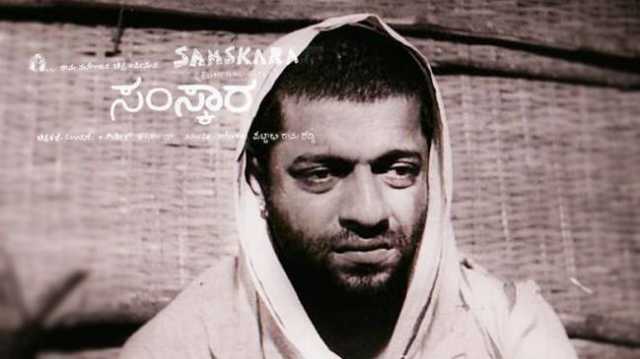
Keyur Seta
Mumbai, 03 Mar 2020 21:00 IST
Updated: 05 Mar 2020 17:08 IST
Directed by Pattabhirama Reddy, this Kannada film makes a strong statement against casteism.

The concept of pure and impure has held many different connotations in Indian society over the centuries. It has never had anything to do with physical hygiene, but is related to the condition of a persons's soul, or being.
In traditional Hindu societies in earlier days, eating food cooked by non-Hindus or Dalits, or having any kind of a relation with them, is considered a sign of impurity. Similarly, those among the so-called ‘upper caste’ Brahmins, who rebelled against the way of life laid down by the rules of their caste, are considered impure.
So what happens when such a person dies? If he doesn’t have any family members, who will perform his last rites? Pattabhirama Reddy’s Kannada movie Samskara (1970) explores such a dilemma.
Naranappa (P Lankesh) was one such Brahmin, who rebelled against the so-called way of life dictated by his caste. He ate meat, enjoyed liquor and kept a prostitute at his place, without a care in the world. One day, he passes away.
As Naranappa was considered impure and a sinner, no priest is willing to perform his last rites. It now rests on head priest Praneshacharya (Girish Karnad) to find a solution. He is pressed for time as his fellow priests cannot eat anything until Naranappa is cremated. Despite going through the old religious texts, Praneshacharya is confused.
The other priests refuse to conduct the final rites for Naranappa but have an eye on the wealth left behind by him. But Praneshacharya has no selfish motive in mind, and is only concerned with solving the problem. Hence, you develop a soft corner for him, despite his regressive beliefs.
The latter half of the movie parallels Praneshcharya’s journey to find answers. You root for him as he runs from pillar to post in search of a solution. Samskara is Karnad’s first film but he hardly seems like a newcomer in the role of Praneshacharya. The late artiste delivers a lesson in the art of subtle acting. For most of the film, his body movement masterfully does the talking, instead of his dialogues.
Girish Karnad (1938-2019): Renaissance Man bids adieu
Karnad is also the screenwriter of the film, which has been adapted from UR Ananthamurthy’s novel of the same name [which the reviewer hasn’t read]. The man shines here too, despite it being his first screenwriting venture.
Samskara takes a major turn when Praneshacharya comes face-to-face with a prostitute, who belongs to the lower caste. Temptation gets the better of him and he ends up having sex with her. In his search for an answer, he also ends up eating at a place meant for lower castes.
So by the definition set by Praneshacharya and his society, he has himself become impure now. So does this make him eligible to perform the last rites of Naranappa? The film leaves the question hanging.
More importantly, Samskara indirectly makes a strong statement against casteism and the notions of pure and impure. Naranappa was considered impure because he carried out his ‘sinful’ acts openly. Will Praneshacharya too bear the same brunt if he doesn’t reveal his actions?
Samskara will turn 50 this year on 13 May. When a film like this stays relevant even five decades after its release, it only means that there has hardly been any progress in Indian society, both rural and urban.
There is no bigger proof of this than the fact that incidents about a ‘lower caste’ person being killed for carrying out activities meant only for the ‘upper caste,’ still make headlines today.
Samskara was screened at the 18th edition of the Third Eye Asian Film Festival in Mumbai on 2 March 2020.
Related topics
Third Eye Asian Film FestivalYou might also like

Review Kannada
Vikrant Rona review: Sudeep-starrer is ambitious but very predictable
Even the 3D experience turns out to be annoying as the film, which was mostly shot at night, feels...

Review Kannada
Dollu review: Spirited shattering of the rigid boundaries of tradition to preserve art
The Kannada-language feature by Sagar Puranik appeals for a widening of the boundaries of tradition...

Review Kannada
KGF: Chapter 2 review – This Yash-starrer is better than its predecessor
The film, which has been marvellously shot and edited by Bhuvan Gowda and Ujwal Kulkarni, is by...

